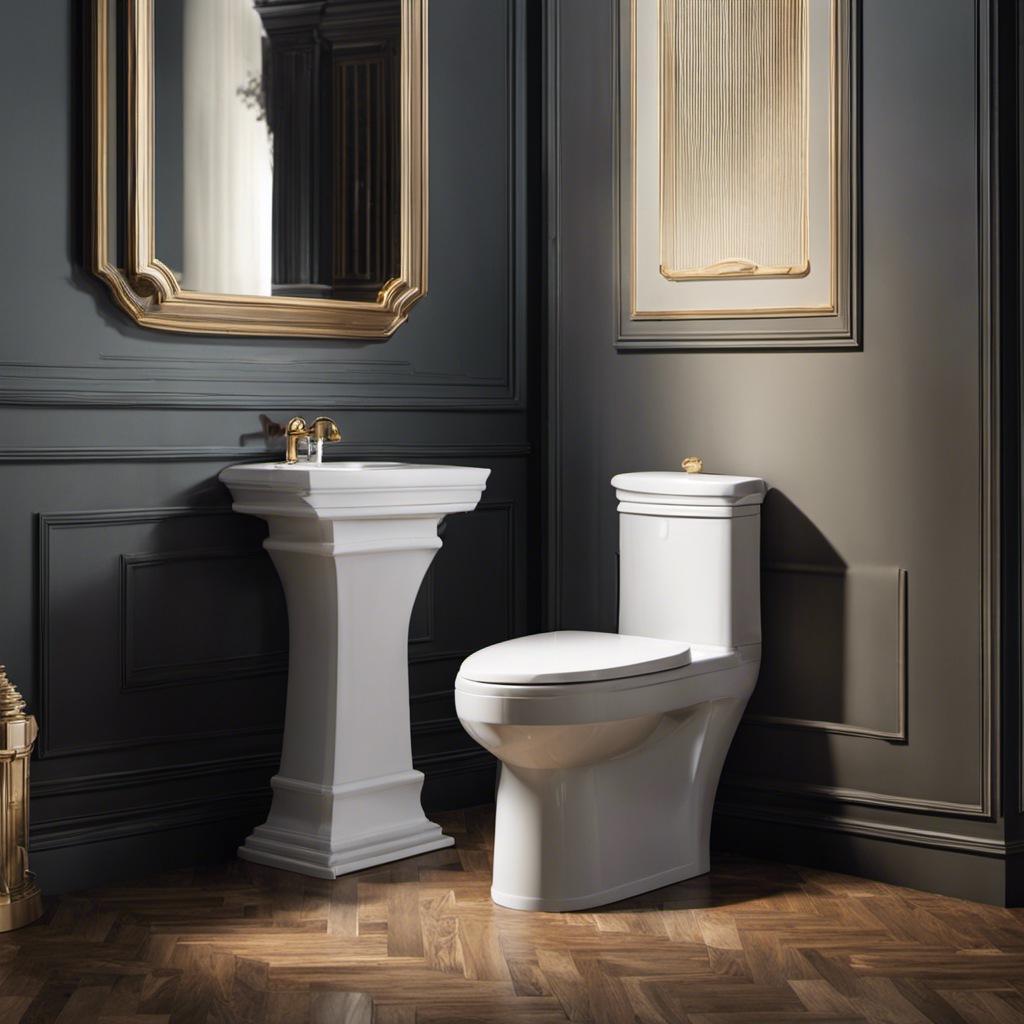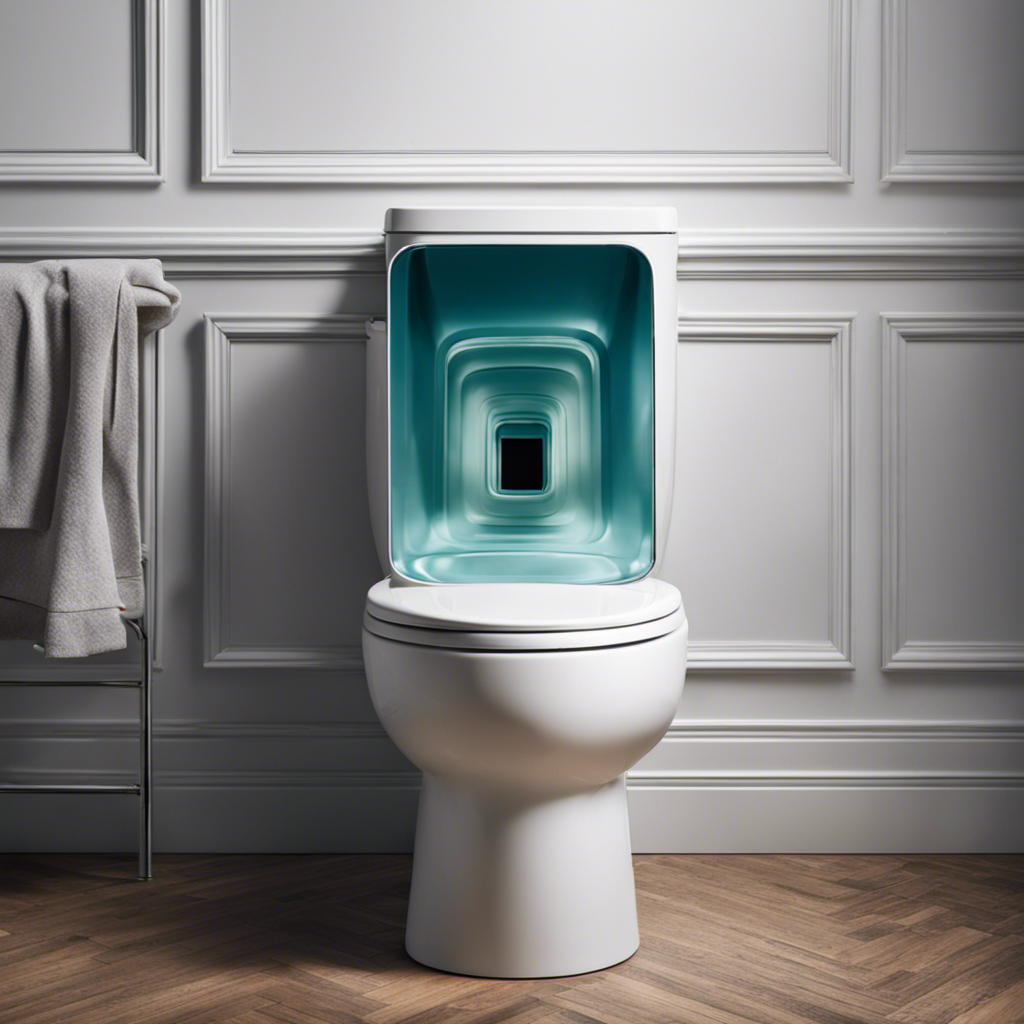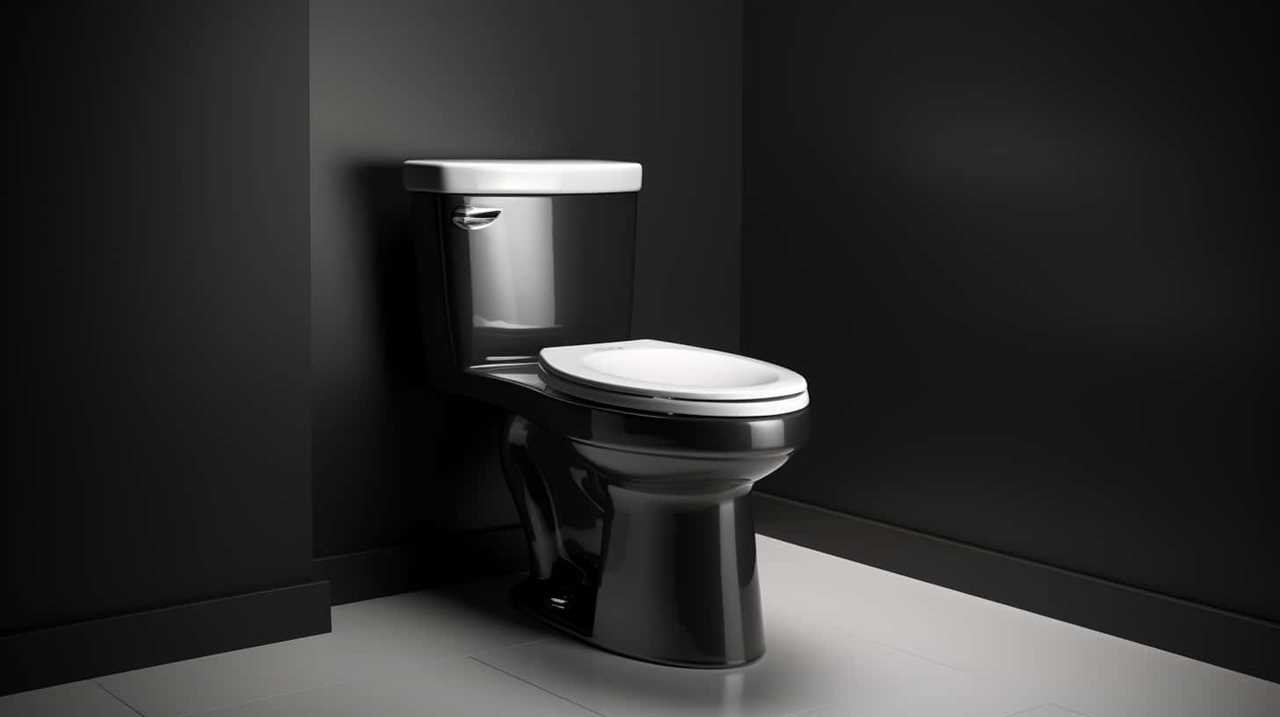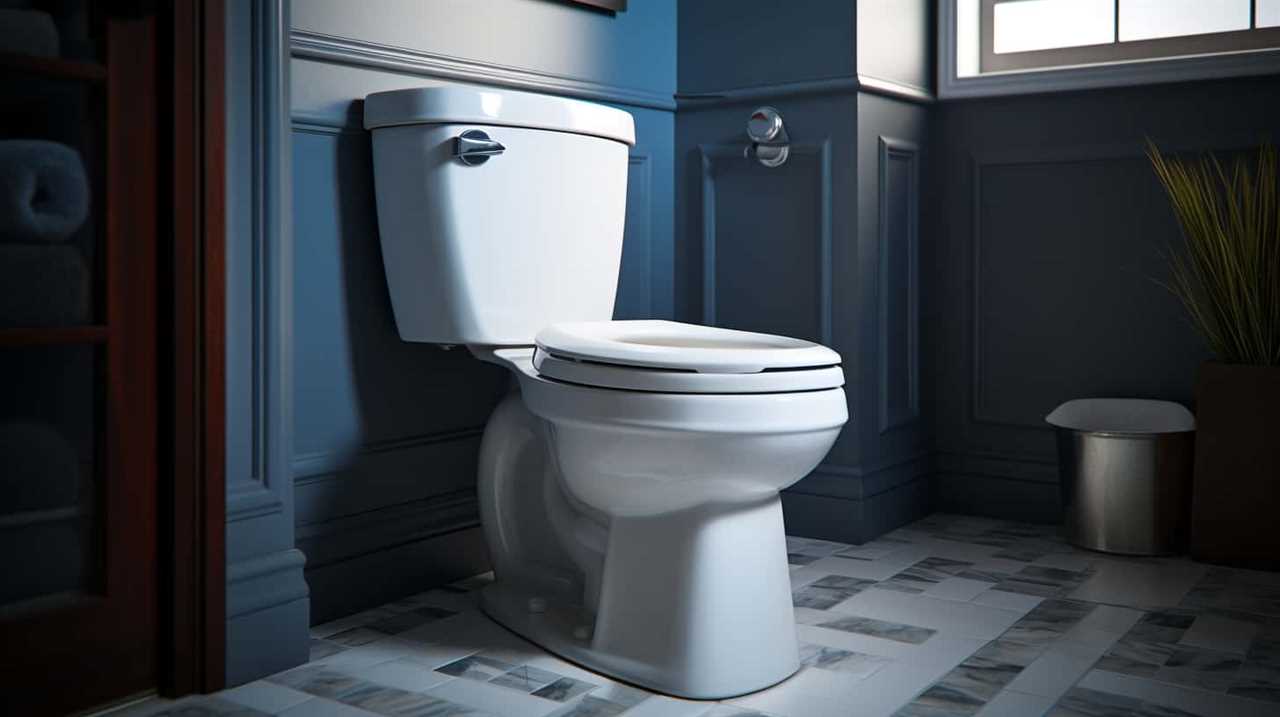Have you ever wondered why your toilet seems to have a mind of its own, running on and off at the most inconvenient times?
Well, fear not, because I’m here to shed some light on this common plumbing issue. In this article, we’ll explore the various reasons behind a running toilet and how to fix them.
From faulty flapper valves to problematic fill valves, we’ll dive into the technical details to help you put an end to this frustrating problem.
So sit back, relax, and let’s get to the bottom of why your toilet won’t stop running.
Key Takeaways
- The most common causes of a running toilet are a faulty flapper valve, toilet bowl leaks, water pressure problems, and a worn-out fill valve.
- To fix a running toilet due to a faulty flapper valve, inspect the valve for wear, check the chain connecting it to the flush handle, test it by flushing the toilet, and replace it with a new one according to the manufacturer’s instructions.
- Toilet tank fill valve issues can lead to water flow and flushing problems, water wastage, slow-filling toilets, inadequate flushes, and water leakage from the fill valve.
- To fix a running toilet due to a faulty float switch, turn off the water supply, disconnect the faulty switch, install a new one, adjust the float level, and test the toilet by flushing to ensure the water stops running.
Common Causes of a Running Toilet
One of the most common causes of a running toilet is a faulty flapper valve. The flapper valve is responsible for controlling the flow of water from the tank into the toilet bowl. When the flapper valve is not functioning properly, it can result in water continuously leaking into the bowl, causing the toilet to run.
Another common cause of a running toilet is toilet bowl leaks. These leaks can occur at the base of the toilet or around the seal between the tank and the bowl.
Water pressure problems can also contribute to a running toilet. If the water pressure is too high, it can cause the toilet to continuously fill and overflow.
It is important to address these issues promptly to prevent water waste and potential damage to your bathroom.
How a Faulty Flapper Valve Can Cause Toilet Running
To fix a toilet that keeps turning on and off, you should check if the flapper valve is faulty. The flapper valve is an essential component of a toilet’s flushing mechanism, responsible for controlling the flow of water from the tank to the bowl. If the flapper valve is not functioning properly, it can cause the toilet to run continuously or intermittently.
Here are some steps to diagnose and replace a faulty flapper valve:
- Inspect the flapper valve for any signs of wear, such as cracks or warping.
- Check the chain connecting the flapper valve to the flush handle to ensure it is properly adjusted.
- Test the flapper valve by flushing the toilet and observing if it closes completely after the flush.
- If the flapper valve is faulty, turn off the water supply to the toilet and remove the old flapper valve.
- Install a new flapper valve by following the manufacturer’s instructions and reattach the chain.
Toilet Tank Fill Valve Issues and Their Effects
If your toilet tank fill valve is malfunctioning, it can lead to issues with water flow and proper flushing. The fill valve is responsible for regulating the water level in the tank, and if it is not functioning properly, it can result in a constantly running toilet or a toilet that fills too slowly. This can not only be annoying, but it can also waste a significant amount of water and increase your water bill. A common problem with a faulty fill valve is water leakage, which can cause the toilet tank water level to drop and result in an inadequate flush. To help you understand the impact of water leakage, here is a table that illustrates the potential consequences:
| Issue | Impact |
|---|---|
| Constant running toilet | Wastes water and increases water bill |
| Slow-filling toilet | Inconvenient and can cause backups |
| Inadequate flush | Requires multiple flushes, wasting water |
It is important to address fill valve issues promptly to ensure proper toilet function and conserve water.
Fixing a Running Toilet Due to a Faulty Float Switch
Fixing a running toilet due to a faulty float switch can save water and prevent further issues. As someone who has dealt with this problem before, I can assure you that it’s not as daunting as it may seem. Here’s a step-by-step guide to help you resolve the issue:
- Turn off the water supply to the toilet.
- Remove the lid of the toilet tank and locate the float switch.
- Disconnect the float switch from the fill valve assembly.
- Install the new float switch by connecting it to the fill valve assembly.
Once you’ve replaced the faulty float switch, it’s important to adjust the float level to ensure proper functioning. This can be done by bending the float arm slightly to raise or lower the float. Test the toilet by flushing and observe if the water stops running once the tank is full. If the problem persists, it might be necessary to consult a professional plumber.
Troubleshooting Other Potential Reasons for Toilet Running
When troubleshooting other potential reasons for your toilet’s continuous water flow, start by checking the flapper valve for any signs of damage or misalignment. If the flapper valve is not sealing properly, it can cause water to continuously flow into the toilet bowl.
Another possible culprit for a running toilet is a problem with the toilet handle. Check if the handle is sticking or not returning to its original position after flushing. This can prevent the flapper valve from closing properly and result in water continuously flowing.
Additionally, water pressure complications can also contribute to a running toilet. If the water pressure is too high, it can cause the fill valve to malfunction and continuously fill the toilet tank. Consider installing a pressure regulator if this is the case.
Frequently Asked Questions
How Much Does It Typically Cost to Fix a Running Toilet?
Typically, the cost to fix a running toilet can vary depending on the specific issue. It’s important to consider toilet repair options and common causes of toilet running to determine the potential costs involved.
Can a Running Toilet Lead to Higher Water Bills?
A running toilet can lead to higher water bills due to excessive water usage. It is important to address this issue promptly through proper plumbing maintenance to conserve water and avoid unnecessary expenses.
Are There Any Temporary Fixes for a Running Toilet?
There are temporary fixes for a running toilet, such as adjusting the float or flapper. However, it’s best to consult toilet repair services for troubleshooting common toilet issues and ensuring a long-term solution.
Can a Running Toilet Cause Damage to the Bathroom Floor?
A running toilet can cause water damage to the bathroom floor if left unaddressed. Regular toilet maintenance, such as fixing leaks and replacing worn-out parts, can help prevent this issue and maintain the integrity of your bathroom.
What Are the Signs That Indicate a Toilet May Start Running Soon?
When it comes to toilet maintenance, it’s important to be aware of the signs that indicate a toilet may start running soon. Common causes include a faulty flapper valve, a worn-out fill valve, or a leaky flush valve.
Conclusion
In conclusion, dealing with a running toilet can be frustrating and wasteful. By understanding the common causes and troubleshooting techniques, you can effectively fix the issue.
Whether it’s a faulty flapper valve, a malfunctioning fill valve, or a problematic float switch, there are solutions available. Don’t let your toilet run on and off like a wild horse. Take action and put an end to the water wastage.
With a little know-how and some handy tools, you can tackle this issue and enjoy a peacefully functioning toilet.










